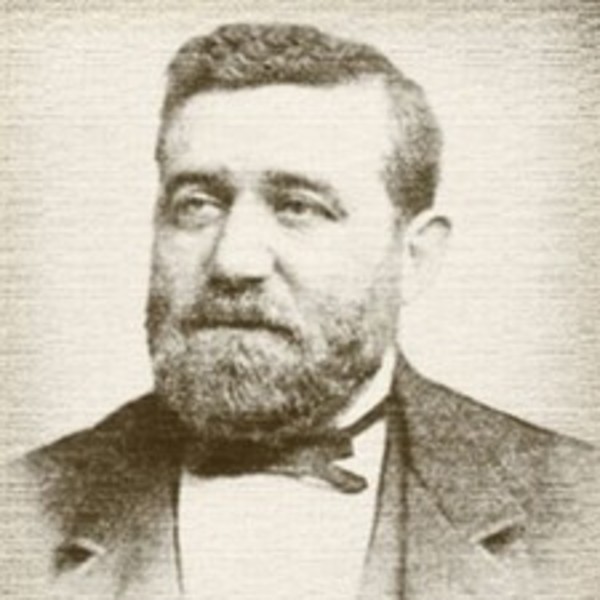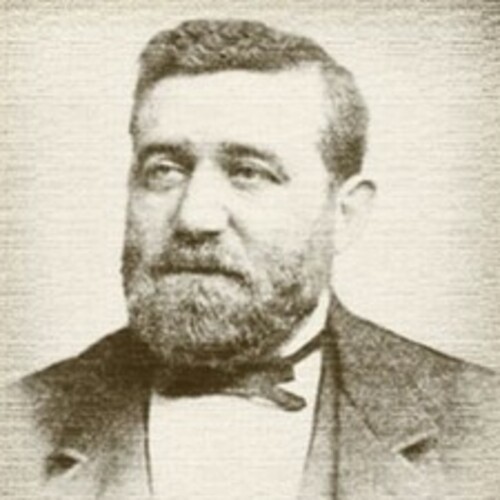
Source: Link
WHITELEY, WILLIAM HENRY, fisherman, merchant, inventor, and politician; b. 5 June 1834 in Boston, eldest son of William Henry Whiteley and Ann Maria Kelson; m. 9 Feb. 1859 Louisa Ann Thompson in London, England, and they had twelve children, two of whom died in childhood; d. 18 Aug. 1903 in St John’s.
William Whiteley spent his youth in Boston, where he was apprenticed as a printer in the office of the American Traveller. Following his father’s death by drowning in 1844 and his mother’s remarriage three years later, the family moved to the southern Labrador coast. There William began to fish with his stepfather, James Buckle. By age 21 he was operating his own small fishing establishment on the island of Bonne-Espérance (Que.). About the same time he started a diary, a habit he maintained throughout his working life. Some parts have survived, and they provide a detailed picture of daily life in this isolated community, spent fishing, hunting, and trapping.
In 1858 Whiteley travelled to England to claim property inherited from a great-uncle. While there he met and married Louisa Thompson, a distant relative. The couple returned to Labrador with £427 from the sale of the estate, and Whiteley started to build up an extensive business at Bonne-Espérance. The enterprise employed a number of families in the cod, salmon, herring, and seal fisheries; by 1880 the workforce numbered about 50. During the following decade Job Brothers and Company of St John’s took a mortgage on Whiteley’s property and advanced money for his fishing operations. In return he sold his catch to the firm and acted as its agent in the region. Following the financial crisis of 1894 [see James Goodfellow*], he was able to arrange a settlement with Job Brothers and thereafter operated his business independently.
William Whiteley is best known in Newfoundland as the inventor of the cod trap, a large box-like apparatus of netting with an opening into which the cod are directed by a long net extending to the shore. According to an account given by his son George Carpenter in 1949, Whiteley first thought of the idea in 1865 when he had occasion to hold a catch of fish in the water with a seine-net. During the winter the family were employed in making the large net required for the trap, and the following summer it was used with great success. Whiteley would later claim that it increased his annual production of cod some thirtyfold. Complaints that Whiteley was also catching salmon in the trap led to its banning by the federal Department of Marine and Fisheries, but in 1876 he successfully petitioned to be allowed to employ it again. By 1890 there were estimated to be some 4,000 traps in use in Newfoundland. Although Whiteley’s claims may have been exaggerated, the device did improve productivity overall and it changed the character of the cod fishery by allowing fishermen to spend more time ashore in the processing and curing and thus reduced the role of women in these activities.
In 1867 the Canadian government had appointed Whiteley fisheries overseer for the Bonne-Espérance division, a position he would hold for 30 years. His duties included collecting licence fees, explaining the regulations, warning fishermen about illegal practices, and settling disputes. There were some complaints that Whiteley favoured Newfoundland fishermen over Canadians and that as a fisherman himself he was in conflict of interest, accusations that both he and his superiors denied. However, in August 1897, faced with the humiliation of an investigation, he sent in his resignation, pleading “old age, and the cares of my business.”
According to family tradition, Whiteley had promised his bride the “finest house on the coast.” In the early 1870s he was able to erect a large two-storey structure that became a landmark in the region. It was visited by missionaries, educators, government officials, and others travelling on business or for pleasure. Dr Wilfred Thomason Grenfell* often stayed there after he established his medical mission to the Labrador. Until the mid 1860s the family lived year round at Bonne-Espérance, and then for a number of years they wintered in Quebec City, where the children attended school. In 1881, following the establishment of a regular government steamer between Newfoundland and Labrador, Whiteley built a house in St John’s, which became the family’s winter residence.
The range of Whiteley’s interests was wide. A friend recalled that, despite his isolation, “one rarely met a more intelligent or well-read man.” Whiteley arranged for the reprinting of George Cartwright*’s Labrador: a poetical epistle in St John’s in 1882 and later wrote a short history of the region for the Evening Telegram. The family were staunch Congregationalists. They supported the work of the Labrador mission, established in the 1860s by Congregational minister Charles Carroll Carpenter, and were active in the Queen’s Road church in St John’s. William was chosen a delegate to the second International Congregational Council at Boston in 1899, but was unable to take time away from the fishery.
With the establishment of a residence in St John’s, Whiteley became active in the public life of Newfoundland. He was given the task of organizing the colony’s exhibit at the International Fisheries Exhibition, held in London in 1883, and travelled there in advance of the commissioner, Ambrose Shea. Six years later he ran for Sir William Vallance Whiteway’s Liberal party in Harbour Grace and topped the polls. He had originally intended to be a candidate in St Barbe, but was asked to withdraw by Job Brothers. The Evening Telegram claimed he had been threatened with financial ruin. In an article headed “Tyranny! Tyranny! Tyranny!!” the paper blamed the “mercantile clique,” particularly Sir Robert Thorburn, Moses Monroe*, Walter Baine Grieve, and Augustus Frederick Goodridge, for using its influence to prevent Whiteley from supporting the “Workingmen’s Party” in St Barbe. In the House of Assembly he held the position of chairman of committee and regularly spoke on issues related to the fisheries. He moved second reading in April 1890 of a bill to regulate the taking of codfish in traps and other devices. He did not stand for re-election in 1893.
William Whiteley directed his fishery at Bonne-Espérance until 1902, when ill health forced him to remain in St John’s. He died there the following year. A “good, lovable man,” he left “numerous friends” in Newfoundland and Labrador.
A number of William Henry Whiteley’s diaries survive; these, along with other family papers, are in the possession of a granddaughter, Miss Mary Whiteley of St John’s. A copy of the subject’s petition to the Dept. of Marine and Fisheries, dated 15 Aug. 1876, is held by Dr William Henry Whiteley of the Memorial Univ. of Nfld, St John’s.
NA, RG 23, 273, file 2003, pt.1; 315, file 2587, pt.1. Evening Telegram (St John’s), 19 March, 4–5 May 1883; 9, 11 Oct. 1889; 29 April, 6 June 1890; 21 Dec. 1903. Newfoundlander, 29 May 1883. Trade Review (St John’s), 7 Nov. 1903. G. [C.] Whit[e]ley, “How the cod trap was invented,” Western Star (Corner Brook, Nfld), 1 July 1949: 17, 22. L. G. Chafe, Chafe’s sealing book; a history of the Newfoundland sealfishery from the earliest available records down to and including the voyage of 1923, ed. H. M. Mosdell (3rd ed., St John’s, 1923), 45. Nfld men (Mott). Mark Ronayne, “The Newfoundland cod traps,” Can., Dept. of Fisheries, Trade News (Ottawa), 9 (1956–57), no.4: 3–7 [an illustration and description of its operation, headed “Newfoundland cod trap in fishing order,” appears as an editorial note in response to this article in no.6: 6]. Shannon Ryan, Fish out of water: the Newfoundland saltfish trade, 1814–1914 (St John’s, 1986). A. S. Whiteley, A century on Bonne Espérance: the saga of the Whiteley family (Ottawa, 1977).
Cite This Article
Shannon Ryan, “WHITELEY, WILLIAM HENRY,” in Dictionary of Canadian Biography, vol. 13, University of Toronto/Université Laval, 2003–, accessed July 5, 2025, https://www.biographi.ca/en/bio/whiteley_william_henry_13E.html.
The citation above shows the format for footnotes and endnotes according to the Chicago manual of style (16th edition). Information to be used in other citation formats:
| Permalink: | https://www.biographi.ca/en/bio/whiteley_william_henry_13E.html |
| Author of Article: | Shannon Ryan |
| Title of Article: | WHITELEY, WILLIAM HENRY |
| Publication Name: | Dictionary of Canadian Biography, vol. 13 |
| Publisher: | University of Toronto/Université Laval |
| Year of revision: | 1994 |
| Access Date: | July 5, 2025 |



